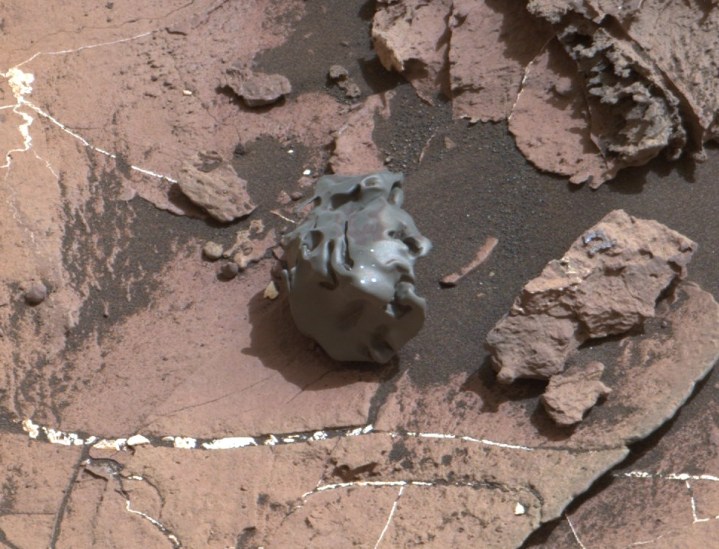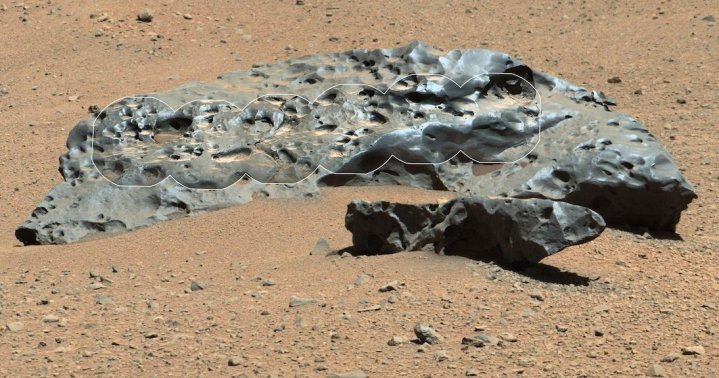While NASA’s newer Perseverance rover usually gets all the headlines, 11-year-old Curiosity continues to trundle across the surface of Mars in search of interesting discoveries. And it’s just made one.
Ashley Stroupe, mission operations engineer at NASA’s Jet Propulsion Laboratory (JPL), which is overseeing the Curiosity mission, said on JPL’s website last month that the rover had happened upon a 1-foot-wide rock that “seems to have come from elsewhere.”
Stroupe said that further investigations were needed to determine if the wonderful specimen was indeed a meteorite or simply a native rock that had been altered by Mars’ weather.
Fast forward a week and the results are in. It is indeed a meteorite.
“Rock. Rock. Rock. Rock. Rock. Rock. METEORITE!” a message on Curiosity’s Twitter account said on Thursday. “It’s not uncommon to find meteorites on Mars — in fact, I’ve done it a few times! But a change in scenery’s always nice.” Curiosity also confirmed that the rock, which the JPL team has named Cacao, is made of iron nickel.
It’s not the first meteorite to have been found on the distant planet. Here’s one called “Egg Rock” that Curiosity came across in 2016:

And check out this 7-foot whopper, nicknamed The Beast, discovered in 2014:

In what turned out to be the biggest meteor strike ever recorded, NASA’s recently defunct InSight lander detected powerful seismic waves from a rock that struck Mars in December 2021.
NASA’s Mars Reconnaissance Orbiter later captured images of a huge crater caused by the impact. Analysis of the data suggested the meteorite was between 16 and 39 feet wide, and created a crater almost 500 feet wide and 70 feet deep. Scientists say data from such strikes can help them to learn more about the structure of the red planet’s crust.
Editors' Recommendations
- NASA video maps all 72 flights taken by Mars Ingenuity helicopter
- Meet NASA’s trio of mini moon rovers set to launch next year
- NASA puts out call for potential Mars astronauts
- Relive Mars rover’s spectacular landing exactly 3 years ago
- NASA is looking for volunteers for yearlong simulated Mars mission


